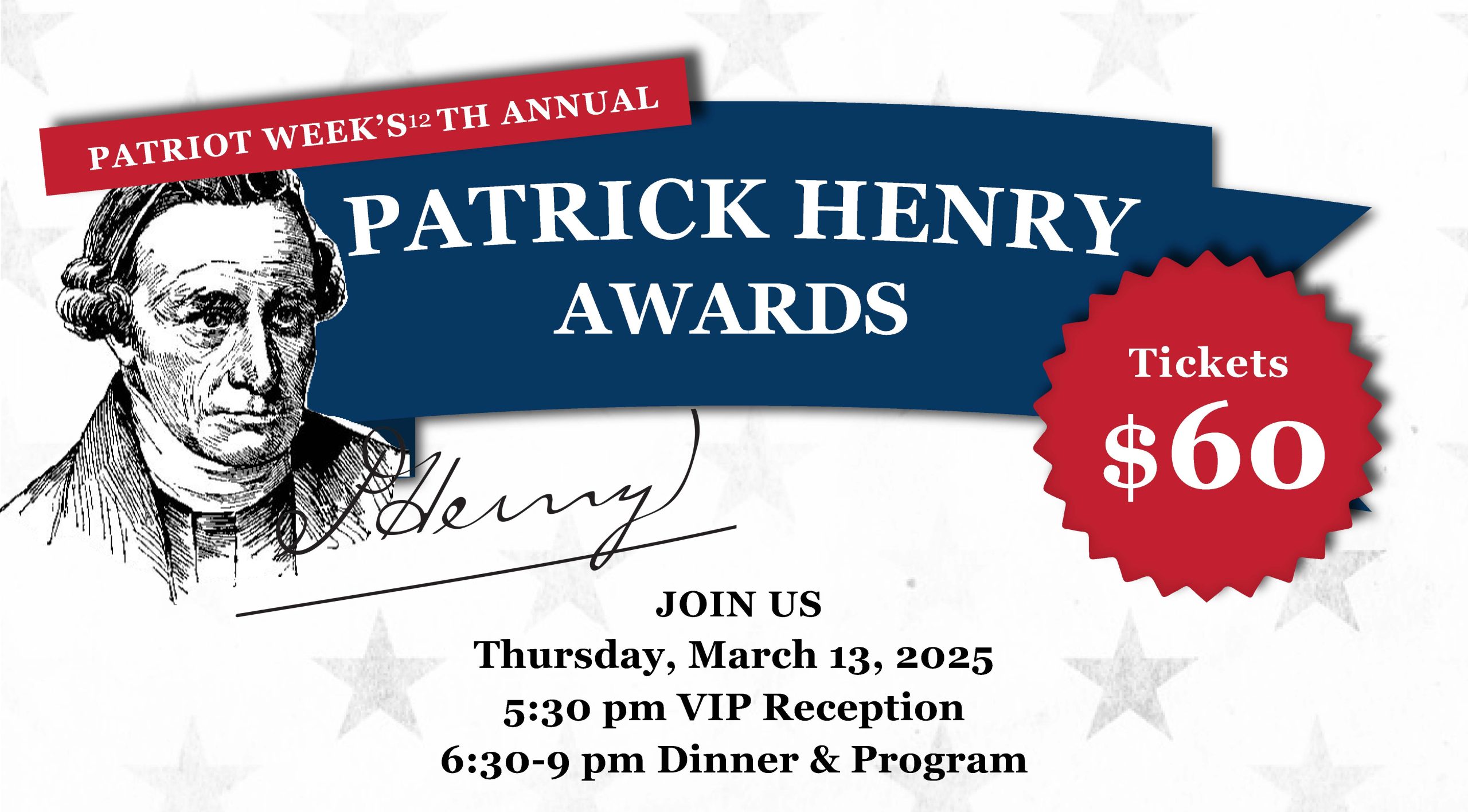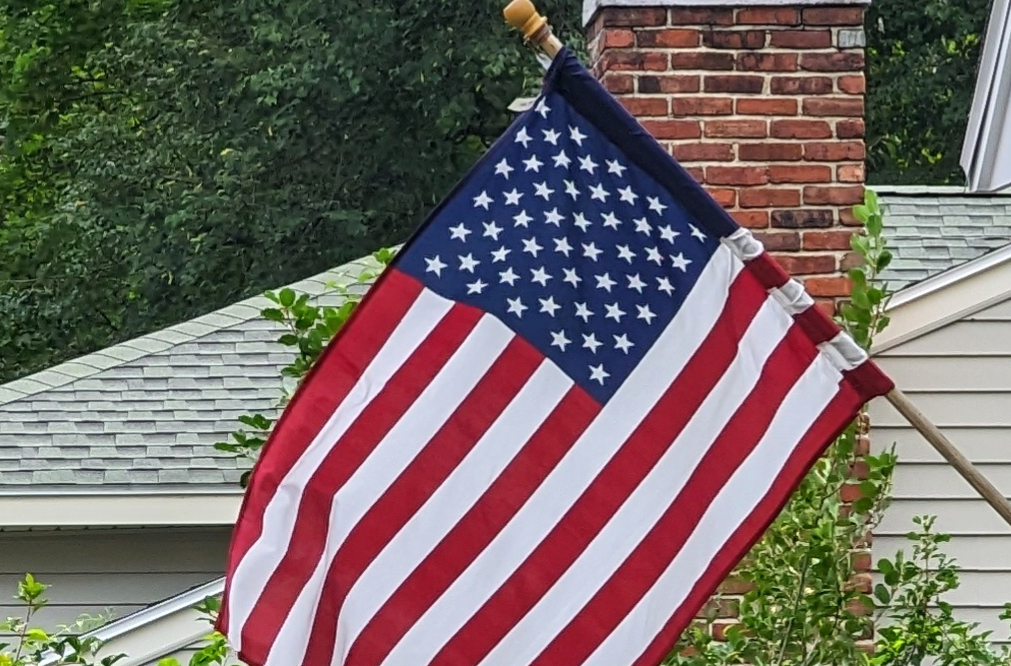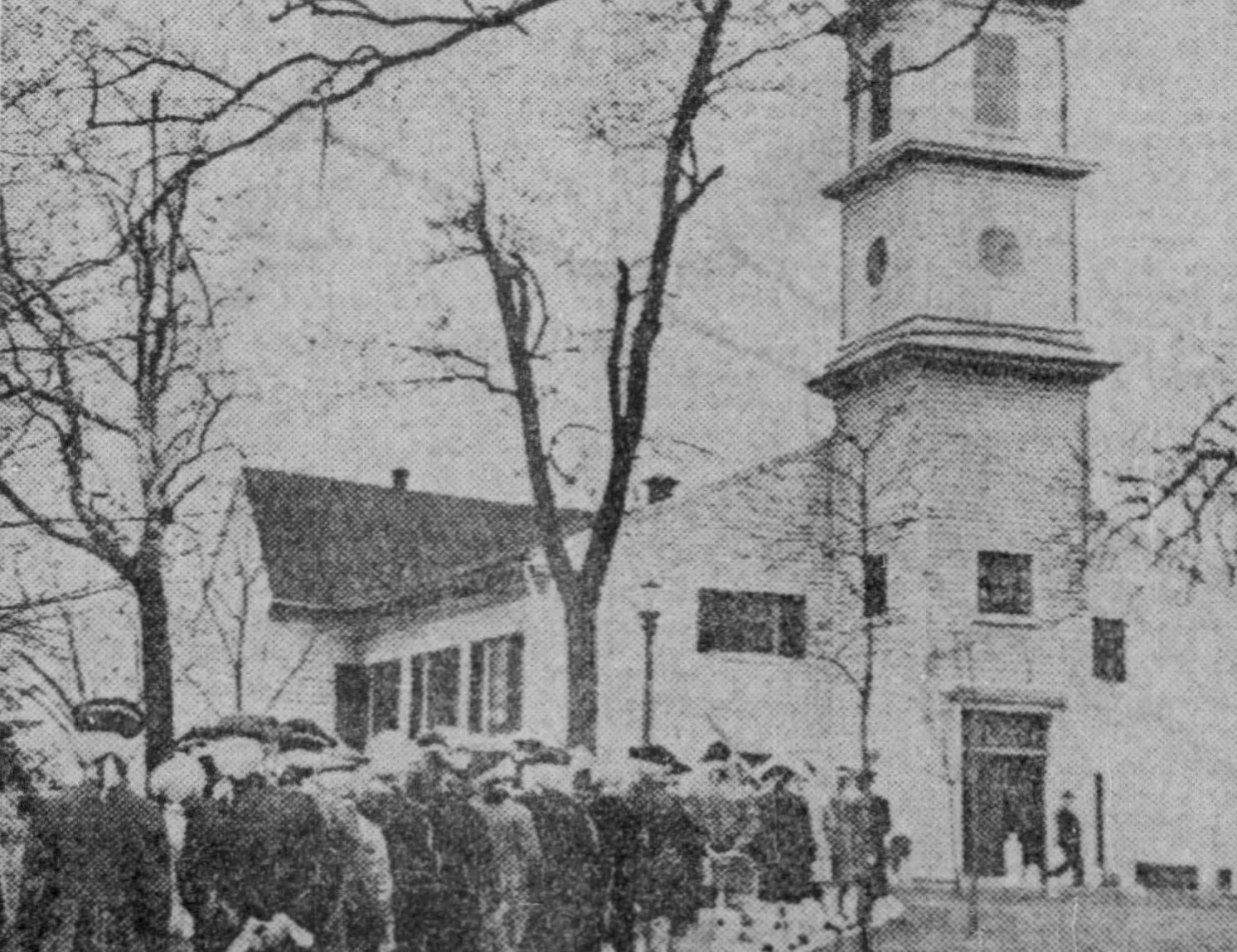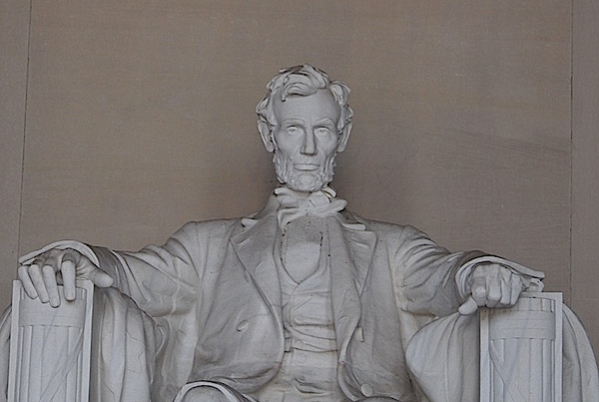
12th Annual Patrick Henry Awards & Dinner
MORE INFORMATION TO COME
By Hans Zeiger
The field of American history is in crisis. Earlier this month, the Department of Education released troubling data indicating that only 13% of eighth-graders met proficiency standards in history. Students are failing to understand the American story and our shared values – and the consequences are severe.
To those of us in the civic education space, these scores come as no surprise. This unfortunate decline in historical knowledge has been decades in the making, starting with changes in higher education. A recent jobs report from the American Historical Association indicated a decrease in jobs across the field of history and a stark move away from tenure-track positions. Some will blame these trends on the pandemic, which certainly had devastating effects, but the erosion of history education goes back well into the last century.
Perhaps one of the reasons that history lost its footing in education is that the field has moved away from emphasizing the core texts of our national heritage.
One of the best ways to teach the complexities of the American story and human nature is through primary-source readings.
Reading primary sources gives students an opportunity to meet the engaging personalities of the historical figures who built our world. By closely examining their thoughts, students have an opportunity to understand the context of their times. Skilled teachers can even turn the study of primary sources into an empathetic quest to understand other human beings better.
Yet students today are rarely exposed to primary source material. That’s why the Jack Miller Center, where I serve as president, created ContextUS – a free, user-friendly online library and research tool of the American political tradition. The rising generation of students is immersed in technology, and that is where we need to meet them.
The platform we developed allows students (along with educators and the public) to engage with the nation’s founding documents and core texts by showing the connections and relationships between them, allowing users to uncover historical contexts throughout time. We incorporated interactive features that enable users to place texts side-by-side, add their own annotations, create study guides, and add external videos or images.
In an age of Internet misinformation, schools should not treat technology like an enemy – instead, they need to enlist it as an ally for education. So long as they are deployed to augment traditional teaching methods, innovative solutions such as ContextUS can even enhance classroom discussion. Through open exploration of historical lives and ideas taken directly from the source, teachers can humanize historical figures so that students can better relate historical ideas to the present.
Firsthand accounts of historical events can help students realize the complexity and appreciate the movement of American history.
James Madison’s notes on the Constitutional Convention, for example, reveal the diversity of thought and, at times, contention within the founding generation. Though Thomas Jefferson owned slaves, his draft of the Declaration of Independence calls slavery a “cruel war against human nature itself, violating it’s most sacred rights of life and liberty in the persons of a distant people who never offended him” and a principal reason for separation from British rule. In a personal letter, Abigail Adams warns her husband John Adams to “remember the ladies” and not to “put such unlimited power into the hands of the Husbands,” cautioning that women will not be “bound by any Laws in which we have no voice, or Representation.”
Without the context and nuance such primary sources provide, history becomes vulnerable to politically driven narratives from both the left and right. We need to do everything we can to bring more Americans – educators, students, and the public alike – back to primary sources for answers.
This article was originally published by RealClearHistory and made available via RealClearWire.

MORE INFORMATION TO COME

By Mike Sabo With new institutes emerging at colleges and universities in Florida, Ohio, Utah, Tennessee, North Carolina, Texas, and elsewhere, civics education may be

By John A. Ragosta On March 23rd in 1775, Patrick Henry rose at St. John’s Church in Richmond, Virginia, to urge his countrymen to arm

By Brian Matthew Jordan One hundred and fifty-nine years ago this Sunday, a 26-year-old white supremacist and Confederate sympathizer named John Wilkes Booth pointed a

By Jonathan W. White Historians and the general public regularly rank Abraham Lincoln as America’s greatest president. There is little doubt that he is widely

The Patriot Week Foundation achieved its 501(c)(3) status in December 2012 and has moved forward by building a sustainable, nonpartisan organization. Currently staffed with an Operations Manager and Education Consultant, the Patriot Week Foundation will be adding to its complement of talent shortly.
This unique, historically grounded, non-partisan approach is desperately needed in our toxic political environment. In no small measure, the fate of the nation depends on it.
Get in Touch
Fill out the form, our team will get back to you ASAP.